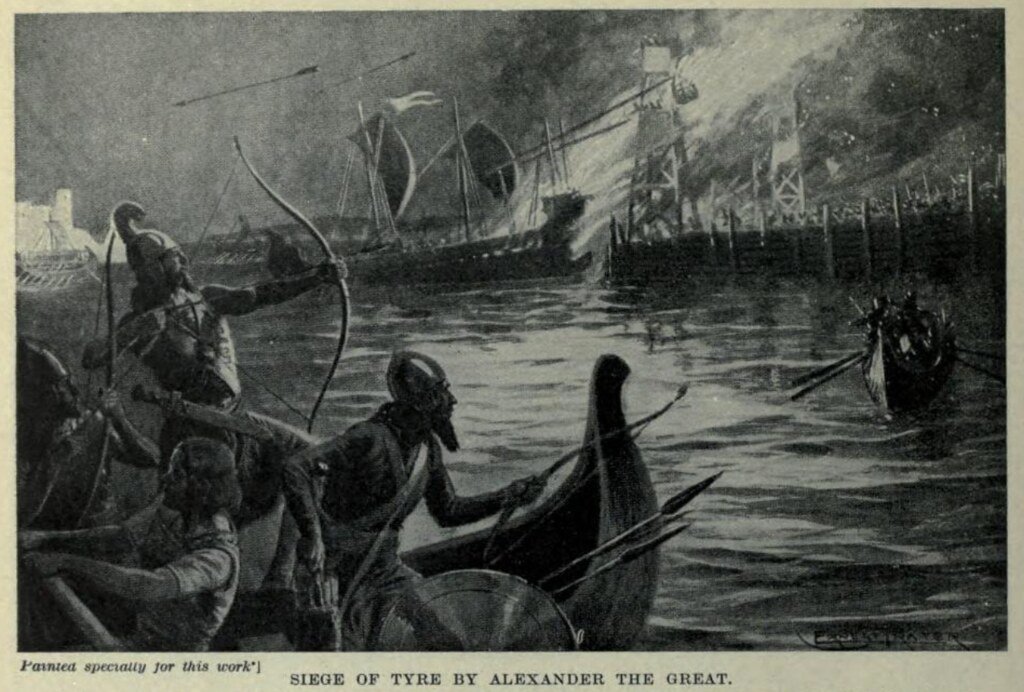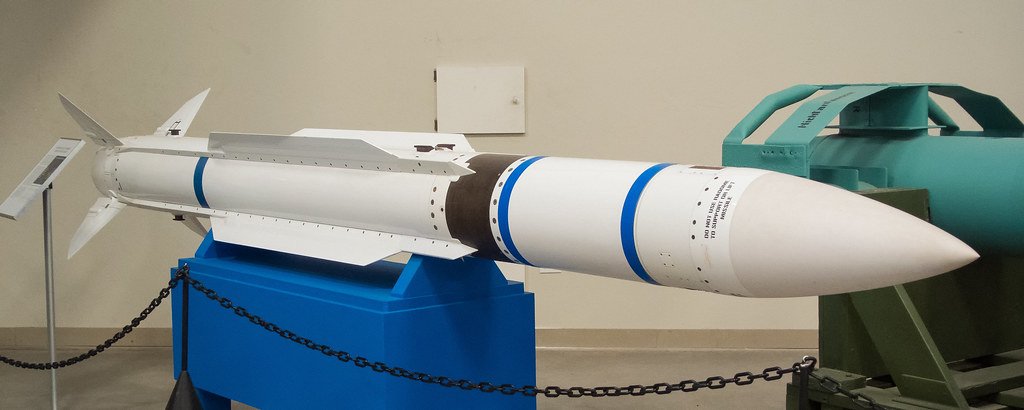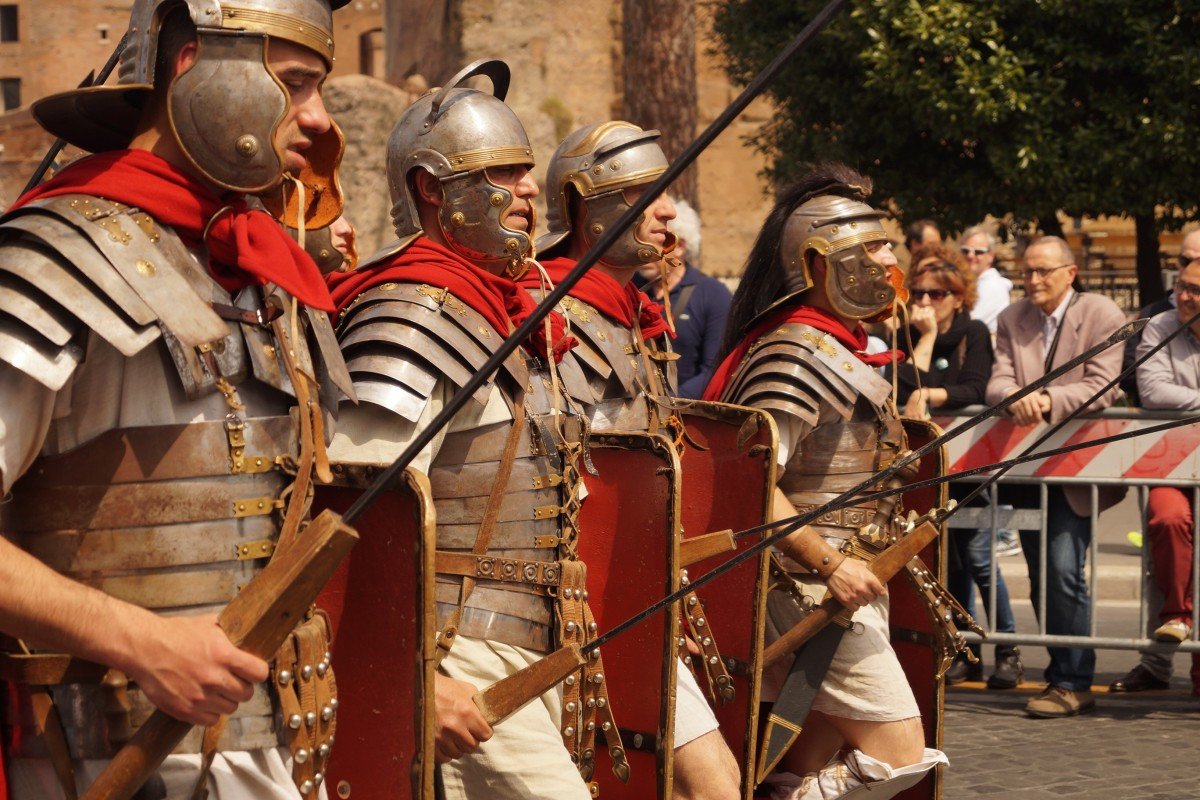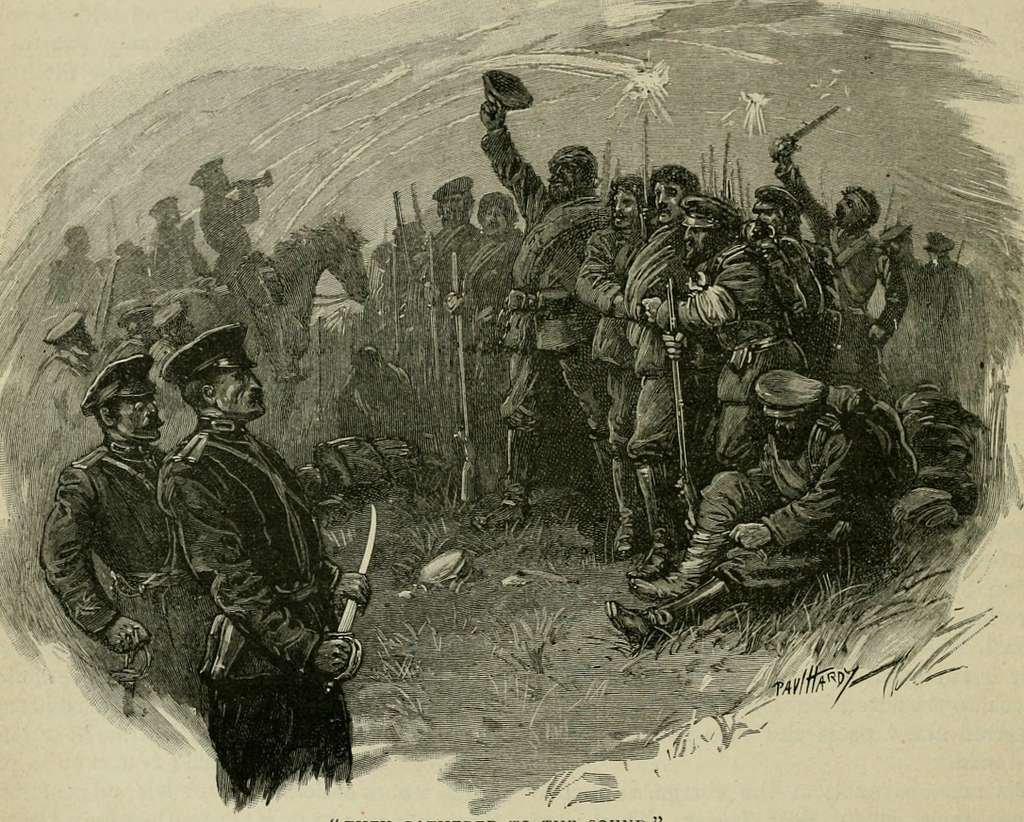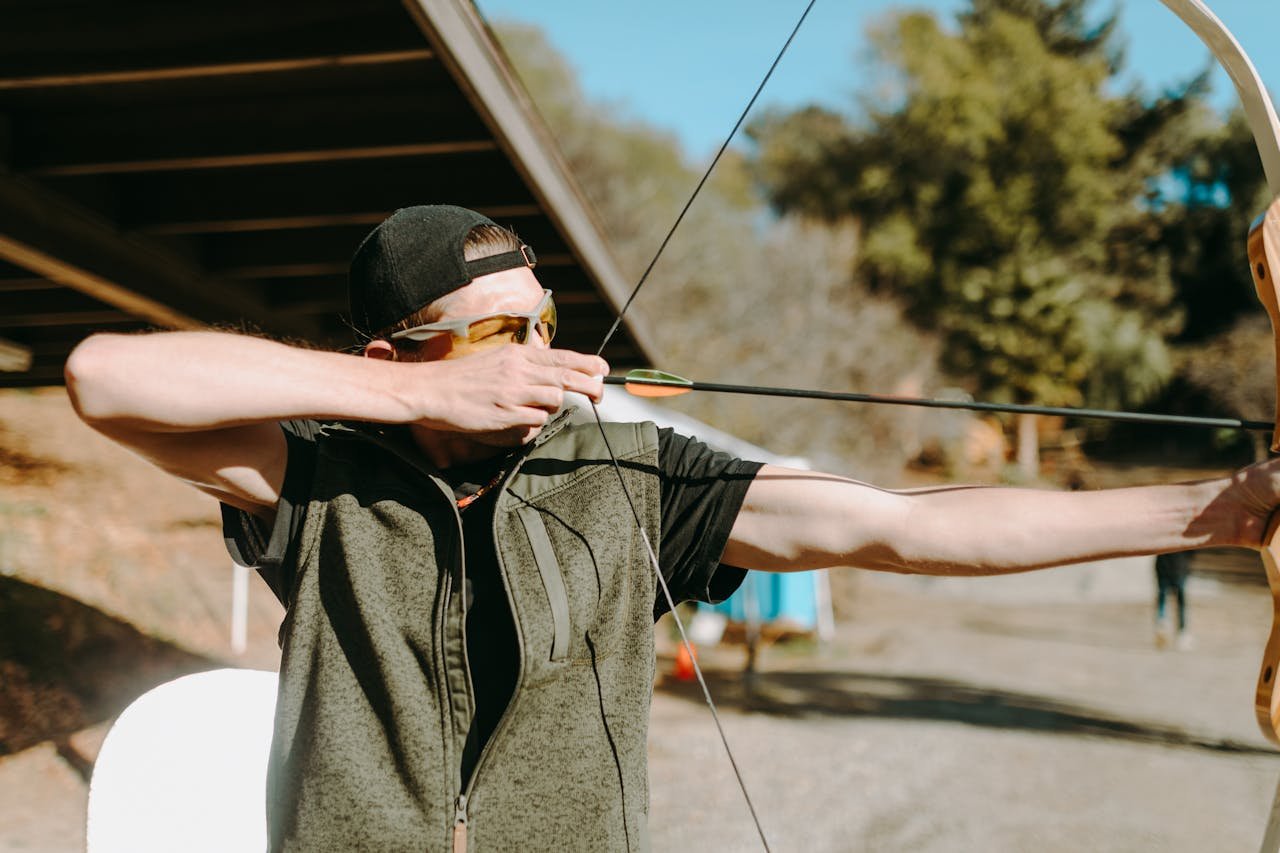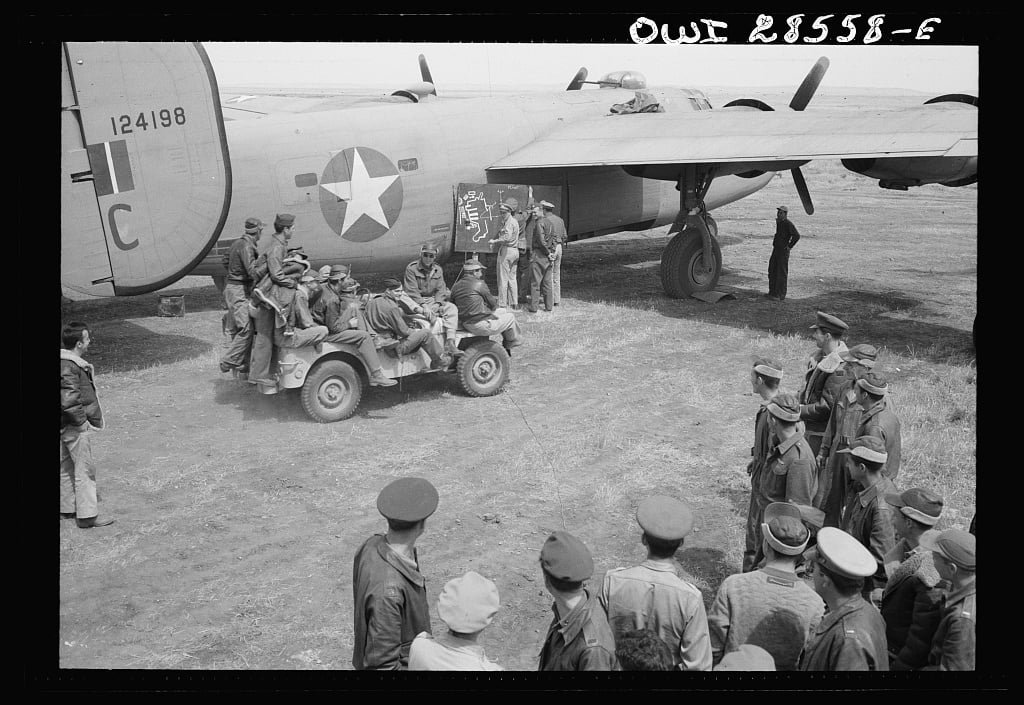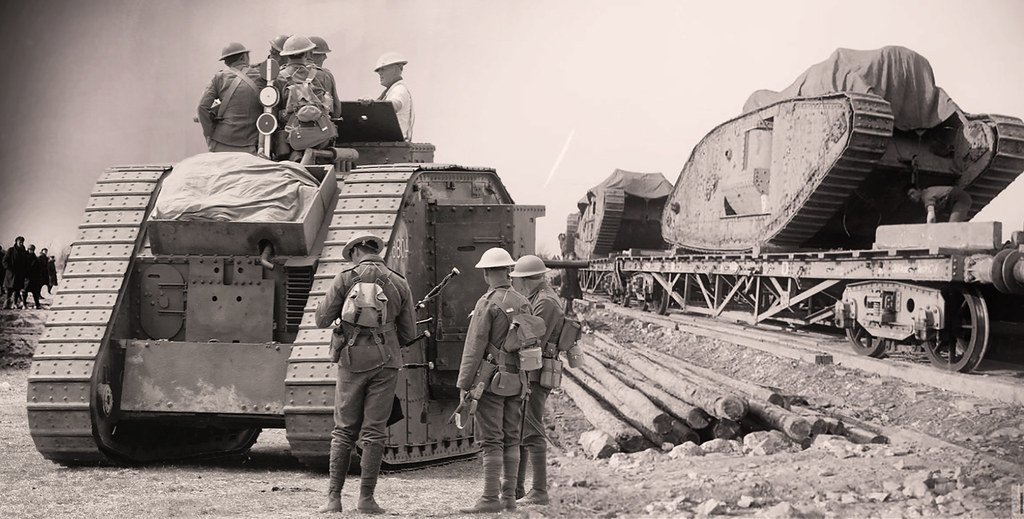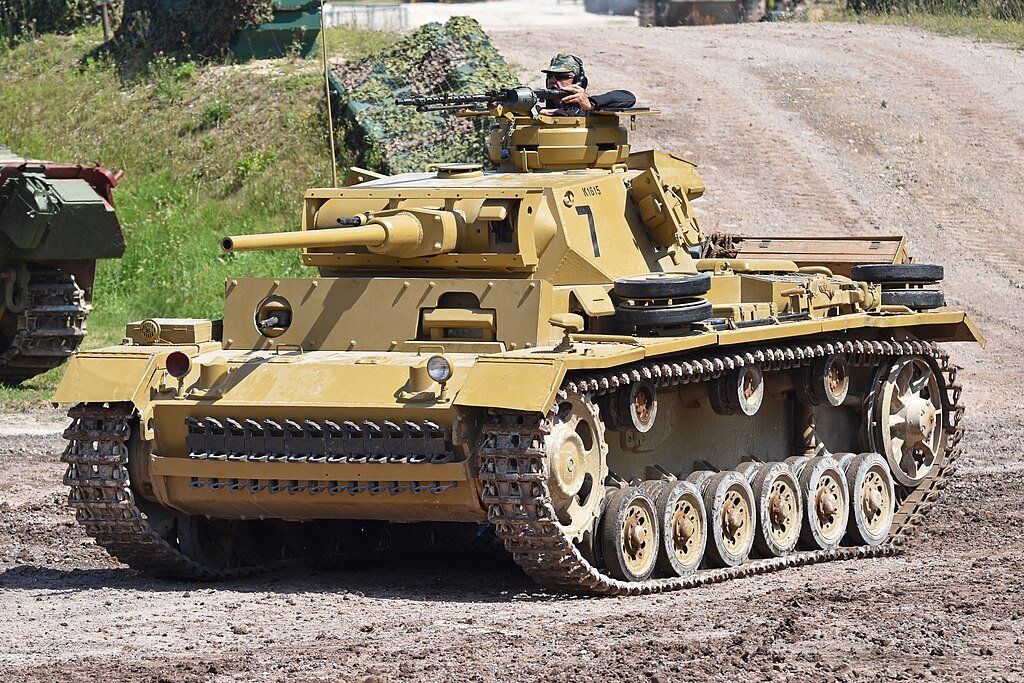Embedded in the annals of history is the profound legacy of the Roman Empire, its military might be defined by an impressive assortment of weapons. This comprehensive guide delves into seven distinctive Roman weapons that played an instrumental role in shaping the destiny of this great civilization. Ranging from iconic swords to formidable siege engines, each weapon reflects the strategic brilliance and martial prowess that characterized the Roman military machine. Join us on a journey through time as we unravel the intricacies of these weapons, shedding light on their design, historical significance, and impact on ancient battlefields.
Table of Contents
Before embarking on this exploration, let’s address some fundamental questions to satiate curiosity:
What is the most famous Roman weapon?
The Gladius, an iconic short sword, is the most famous Roman weapon. It epitomized the martial spirit of the Roman Legionaries. Renowned for its close-quarters combat efficiency, the Gladius possessed a unique design with a double-edged blade and a compact length, allowing Roman soldiers to execute swift and lethal strikes in the chaotic and often brutal confrontations of ancient warfare.
Crafted with precision and durability through advanced forging techniques rooted in the esteemed Roman blacksmithing tradition, the Gladius became more than just a weapon—it became a symbol of Roman military prowess and discipline. Its psychological impact on the battlefield, instilling confidence and fearlessness among Legionaries, solidified its legacy as the quintessential weapon that defined the might of the Roman Empire.

The Gladius’s historical significance extends beyond its physical attributes, resonating with the disciplined ethos of the Roman Legions. As a testament to strategic brilliance and martial might, the Gladius remains an enduring symbol of the indomitable spirit that propelled the Roman Empire to greatness.
What was the secret weapon of the Romans?
The Romans’ “secret weapon” was arguably their mastery of engineering and siege warfare, with the Ballista emerging as a key component. The Ballista, a powerful artillery device, became a game-changer on the ancient battlefield. Employing a torsion-powered mechanism, the Roman Ballista could launch massive projectiles with remarkable accuracy and force, outclassing the weaponry of many adversaries. Its innovative design and operational efficiency allowed the Romans to dominate sieges and control the battlefield dynamics, giving them a strategic advantage that was often unparalleled.

The Ballista’s significance lay not just in its destructive capabilities but also in its psychological impact, instilling fear in the hearts of those facing the Roman Legions. This sophisticated siege weapon, with its precision and range, reflected the Romans’ commitment to military innovation, making it a “secret weapon” that contributed significantly to their success in various campaigns throughout the expansive history of the Roman Empire.
What were most Roman weapons made of?
Most Roman weapons were crafted with a meticulous blend of artistry and functionality, primarily employing iron and steel in their construction. Iron, a readily available and durable material, formed the core of many weapons, providing the necessary strength to withstand the rigors of ancient warfare. Skilled Roman blacksmiths utilized advanced forging techniques, such as quenching and tempering, to enhance the hardness and durability of iron, ensuring the weapons could endure the demands of battle.
Steel, an alloy of iron and carbon, further elevated the quality of Roman weaponry. Its incorporation allowed for the creation of sharper and more resilient blades, enhancing the overall effectiveness of swords, spears, and other edged weapons. This sophisticated metallurgical approach showcased the Romans’ mastery of weapon craftsmanship, contributing to the formidable arsenal that played a crucial role in their military dominance. The fusion of iron and steel in Roman weaponry not only reflected the practical needs of warfare but also underscored the sophistication of ancient Roman metallurgy.
Now equipped with a foundational understanding, let’s delve into the arsenal:
Gladius: The Sword of the Legion
The Gladius, celebrated as the quintessential Sword of the Legion, transcends its role as a mere weapon, embodying unparalleled efficiency in close-quarters combat for Roman Legionaries. Its iconic design, featuring a double-edged blade and compact length, facilitated swift and lethal strikes amidst the tumultuous chaos of ancient battlefields. Forged with meticulous precision through advanced techniques deeply rooted in the esteemed Roman blacksmithing tradition, the Gladius exhibited exceptional durability and sharpness, ensuring its unwavering reliability in the rigors of war.

Beyond its physical prowess, the Gladius carried a profound psychological impact, serving as a symbol of Roman military might and discipline. Its presence on the battlefield became more than a functional tool—it instilled unwavering confidence and fearlessness among Legionaries, solidifying its status as a powerful emblem of the indomitable spirit that characterized the Roman Empire. In essence, the Gladius not only carved through adversaries but also etched itself into the historical legacy of The Roman Legions are a testament to their skill, discipline, and unwavering determination.
Pilum: The Roman Javelin
The Pilum, a distinctive Roman weapon, was a testament to the strategic ingenuity of the Roman military. Crafted with precision, it served a dual purpose, excelling as both a ranged weapon and a disruptor of enemy formations. What set the Pilum apart was its unique weighted spearhead, meticulously designed for maximum penetration. Legionaries orchestrated disciplined volleys, unleashing a formidable rain of Pilum that not only pierced through enemy ranks but also sowed widespread chaos on the battlefield. This dual-purpose design showcased the Romans’ ability to integrate innovation and tactical brilliance seamlessly. It solidifies the Pilum as a critical component in the Roman Legion’s arsenal and a symbol of their strategic dominance on ancient battlefields.

The Pilum’s effectiveness extended beyond its lethal impact; it played a crucial role in shaping the dynamics of engagements, creating vulnerabilities in adversary formations. Its deployment reflected the Romans’ mastery of battlefield tactics, emphasizing not only brute force but also a nuanced understanding of disrupting the enemy’s cohesion. As a symbol of Roman military sophistication, the Pilum remains a testament to the enduring legacy of strategic brilliance that defined the Roman Empire’s martial might.
Scutum: The Legionary Shield
The Scutum, revered as the Legionary Shield, held a paramount position in the Roman military arsenal, its role extending far beyond mere defense. Crafted with precision, this distinctive rectangular shield featured layers of wood reinforced with linen or leather, creating a formidable barrier against enemy assaults. Beyond its protective function, the Scutum served as a versatile tactical tool in the hands of Roman Legionaries, contributing to the disciplined combat style that defined Roman warfare.

With dimensions typically measuring around 3 feet in width and 4 feet in length, the Scutum offered effective coverage, facilitating coordinated maneuvers on the battlefield. Its practical design and durability underscored the Romans’ commitment to both defensive strength and tactical versatility. The Scutum became an integral component of the Legion’s military presence, symbolizing the meticulous craftsmanship and strategic brilliance that characterized the Roman military machine.
Lorica Segmentata: The Roman Armor
The Lorica Segmentata stands as a testament to the advanced engineering prowess of the ancient Romans. This distinctive form of Roman body armor represented the epitome of military innovation, characterized by articulated metal strips intricately fastened to leather straps. The segmented structure provided a delicate balance, offering Roman soldiers optimal protection without compromising flexibility on the battlefield. The interlocking metal plates, strategically covering the torso, shoulders, and upper arms, formed an impervious defense against slashing and stabbing attacks, contributing to the survivability of Roman Legionaries.

Beyond its protective capabilities, the Lorica Segmentata showcased the Romans’ mastery of metallurgy and armor design. Its innovative construction allowed for ease of movement, a crucial factor in the agility required during Roman military engagements. This sophisticated armor not only became a symbol of the Legionaries’ resilience but also played a vital role in shaping the tactical efficiency of the Roman military, emphasizing the fusion of protection and mobility—a hallmark of their military dominance in the ancient world.
Ballista: The Artillery Marvel
The Ballista, a marvel of ancient artillery, stands as a monumental weapon in the annals of Roman warfare. This colossal siege engine exemplified unparalleled engineering ingenuity, utilizing twisted skeins of animal sinew or hair as torsion to unleash formidable power. What set the Ballista apart was its ability to launch massive projectiles with remarkable accuracy and an impressive range. The versatility of this war machine allowed Romans to employ variations for both stone-throwing and arrow-shooting, reshaping the dynamics of ancient battles.

The Ballista’s precision and devastating impact on enemy fortifications marked it as a true game-changer, significantly contributing to the success of Roman military campaigns. This engineering marvel not only symbolized Roman technological prowess but also served as a testament to their strategic sophistication on the battlefield. As a powerful tool of destruction, the Ballista left an indelible mark on the landscape of ancient warfare, showcasing the ingenuity that defined Roman military superiority.
Hasta: The Legionary Spear
The Hasta, a spear of paramount significance in the arsenal of Roman Legionaries, epitomized versatility on the ancient battlefield. Distinguished by its elongated shaft and pointed metal head, the Hasta served dual roles as a formidable thrusting weapon amidst the chaos of battle and as a symbol of authority, denoting the Legionary’s rank and leadership. The design of the Hasta allowed Legionaries to engage adversaries effectively from a distance, conferring a strategic advantage in both offensive charges and defensive formations.

The variations of the Hasta, tailored to diverse tactical scenarios, highlighted the adaptability of the Roman military. As a symbol of authority, the Hasta became a visual representation of the Legionary’s disciplined rank, instilling a sense of order and command on the battlefield. Its presence not only showcased Roman military might but also reflected the strategic brilliance that defined the Legion’s mastery in utilizing a multipurpose weapon to its fullest potential, demonstrating the depth of Roman military sophistication.
Onager: The Roman Catapult
The Onager, a formidable Roman catapult, represents an engineering marvel that left an indelible mark on ancient warfare. Operating as a powerful siege engine, the Onager derived its name from the wild donkey’s powerful kicking motion, akin to the catapult’s counterweight mechanism. Its construction featured a large throwing arm affixed to a vertical frame connected to a torsion bundle of twisted animal sinew or hair. The torsion power, generated by winding the throwing arm, bestowed the Onager with immense launching force.

In battles and sieges, the Onager played a pivotal role, hurling massive projectiles such as stones, bolts, or incendiary devices with remarkable accuracy and force. The ingenuity behind the Onager lay not only in its destructive power but also in its strategic versatility, enabling Roman legions to breach fortifications and intimidate adversaries. As we explore the Onager, we unravel the technological prowess that characterized Roman military innovation, underscoring its significant impact on the outcome of historical conflicts.
Our comprehensive exploration of the seven types of Roman weapons unveils a rich tapestry of military ingenuity that defined the Roman Empire’s martial supremacy. From the close-quarter precision of the Gladius to the strategic brilliance of the Ballista, each weapon signifies the depth of Roman warfare sophistication. As we step back into history, the echoes of Legionary marches and the clashing of steel reverberate, reminding us of a formidable force that left an indelible mark on the annals of warfare. The enduring legacy of these weapons stands as a testament to Roman military innovation and strategic prowess that shaped the course of history.

